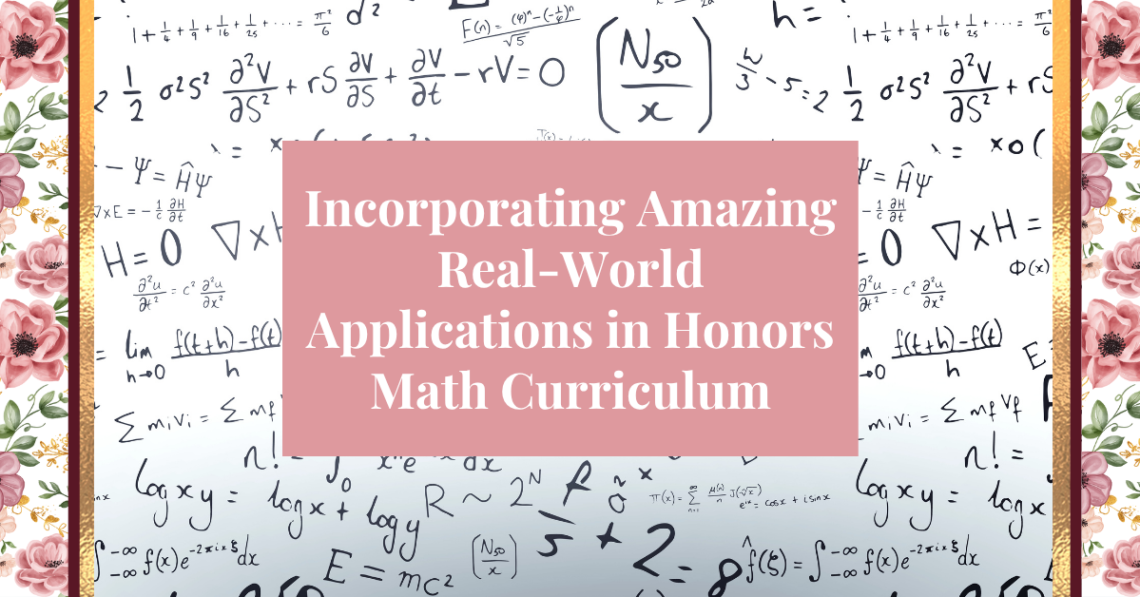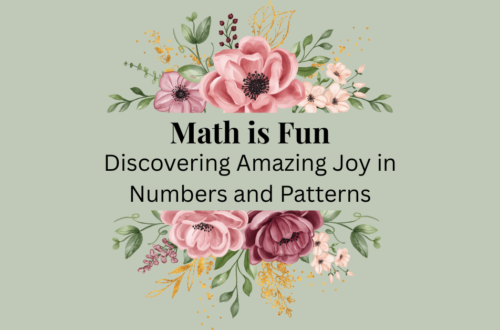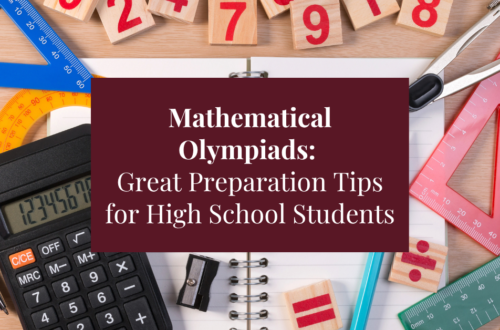Introduction
Honors math students are often highly capable and motivated, but sometimes, even the brightest students can struggle with finding relevance in abstract concepts. One powerful way to boost engagement is by incorporating real-world applications into the curriculum. When students see how math concepts play out in real life—whether in technology, economics, or the arts—they gain a deeper understanding and appreciation for what they’re learning. Let’s explore some practical ways to enhance relevance and engagement by tying math to real-world situations.
1. Connect to Career Paths and Fields of Study
Many honors math students are preparing for future careers, and showing them how math is applied in various fields can make concepts feel more purposeful.
- Introduce students to math in engineering, computer science, finance, and medicine.
- Use real-world problems like cryptography in cybersecurity, data analysis in business, or modeling in biology.
- Bring in guest speakers or virtual field trips to professionals in math-related careers who can share how they use math daily.
When students see how math contributes to their future goals, they’re more likely to engage and work hard to master it.
2. Incorporate Technology and Tools
Math isn’t just about paper and pencil—it’s also about the tools that professionals use in real-world situations.
- Teach students how to use graphing calculators, spreadsheet software (like Excel), and mathematical modeling tools (like MATLAB or GeoGebra).
- Show students how to use coding to solve mathematical problems or simulate systems (e.g., using Python for data analysis).
- Introduce simulation tools to model complex systems, such as population growth, climate change, or financial investments.
These tools not only help students apply math in real contexts but also build skills that are highly relevant to modern careers.
3. Explore Real-World Problem Solving
Real-world math problems provide an opportunity for students to apply critical thinking and analytical skills in a meaningful way.
- Assign projects that require students to analyze data from real sources (e.g., sports statistics, weather data, or economic trends).
- Encourage students to tackle optimization problems, such as minimizing cost or maximizing profit, using calculus or linear programming.
- Introduce challenges like planning an event or creating a budget, where they use geometry, algebra, and statistics to solve practical issues.
By connecting math to problems students care about, they are more likely to see its usefulness beyond the classroom.
4. Integrate Math into Other Disciplines
Interdisciplinary learning makes math more engaging by showing its connection to other subjects.
- Combine math and art by exploring symmetry, fractals, and geometry in architecture, graphic design, and music.
- In history, examine how math was used in ancient civilizations for architecture, astronomy, or trade.
- In environmental science, use statistics and modeling to predict climate patterns, track endangered species, or analyze resource consumption.
By showing how math is used in various disciplines, you can appeal to students’ diverse interests and make learning more engaging.
5. Use Data and Statistics to Address Current Events
Real-world math can be a powerful tool for understanding and analyzing the world around us.
- Encourage students to explore current events through the lens of math, such as polling data, election predictions, or economic reports.
- Use statistical analysis to study trends in public health, such as the spread of diseases or vaccine efficacy.
- Use graph theory to examine real networks like social media, the internet, or transportation systems.
Discussing contemporary issues and applying math to solve real-world problems gives students a sense of purpose and relevance.
6. Challenge Students with Interdisciplinary Projects
Give students the opportunity to engage in long-term projects that require applying math concepts across multiple areas.
- Create a real-world project where students work in teams to solve a problem, like designing an energy-efficient building or creating a budget for a community service project.
- Assign them to conduct a statistical survey on a topic of interest, analyze the results, and present findings.
- Have students research the impact of math in their chosen field of interest, such as technology, medicine, or sports, and present their findings.
These projects help students see the practical applications of math in a way that is hands-on and engaging.
Final Thoughts
Incorporating real-world applications into the honors math curriculum is essential for fostering relevance and engagement. By connecting abstract concepts to tangible problems, careers, and current events, students gain a deeper understanding of how math fits into the larger picture of their lives and the world around them. Whether through technology, interdisciplinary projects, or real-world problem solving, these applications help students appreciate the value and impact of mathematics.
How do you incorporate real-world applications into your honors math curriculum? Share your strategies in the comments—we’d love to hear your ideas!





